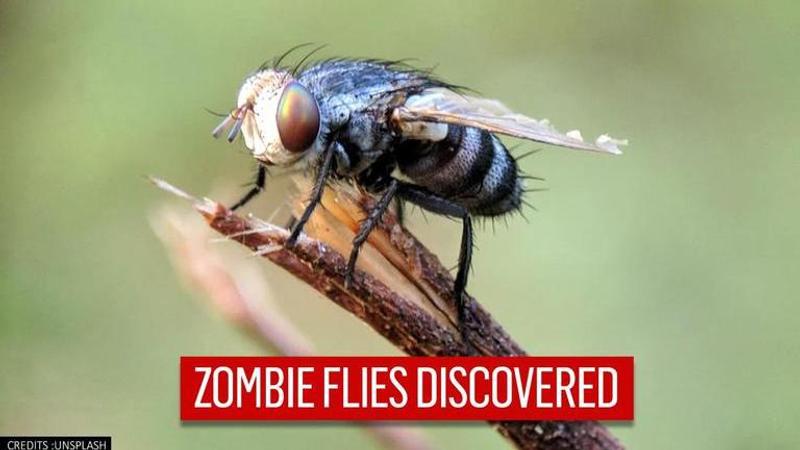Published 18:58 IST, December 16th 2020
Denmark scientists discover two new species of fungi that turn flies into 'zombies'
Scientists in Denmark have discovered two new fungi species, Strongwellsea tigrinae and Strongwellsea acerosa, that infect flies and eject spores out of a large

Scientists in Denmark have discovered two new fungi species, Strongwellsea tigrinae and Strongwellsea acerosa, that infect flies and eject spores out of a large hole in the insect’s abdomen “like small rockets”. With both these species, the host continues to live for days as it carries out normal activities and socialises with other flies as the fungus consumes its genitals, fat reserves, reproductive organs and finally its muscle. The news release says, “Both fungi were discovered in the Capital Region of Denmark -- with Strongwellsea tigrinae, being found in Jægerspris and Strongwellsea acerosa, on Amager”.
New flies discovered by Denmark researchers
Professor Jørgen Eilenberg of the Department of Plant and Environmental Sciences said, “This is an exciting and bizarre aspect of biodiversity that we have discovered in Denmark”. He added, "In and of itself, this mapping of new and unknown biodiversity is valuable. But at the same time, this is basic new knowledge that can serve as a basis for experimental studies of infection pathways and the bioactive substances involved”. The fungal parasite infects a small percentage of these two fly species, which live completely by predating other flies. These species survive winters using their thick-walled, orange or yellow resting spores. As per the release, the researchers believe that these spores germinate in spring and infect flies as they become active.
(Image Credits: ars.els-cdn.com)
Terming it as ‘fascinatin’, Eilenberg said, “It is fascinating how the life cycles of these fungi are so well adapted to the lives of the flies they target”. Strongwellsea tigrinae was discovered by Eilenberg in 1993 in North Zealand in eastern Denmark and Strongwellsea acerosa was first seen in a residential area in Copenhagen by one of his students, Dorthe Britt Tiwald, in 1998. However, both these species have now been declared as new species. Also, there are a total of five known species of strongwellsea.
Eilenberg said that the researchers suspect that these fungi may produce amphetamine-like substances which keep a fly's energy level high up. He added, “At the same time, we have a theory that the fungi also produce substances which keep microorganisms away from the fly's fungal wound. We would definitely like to continue our research, as doing so has the potential to discover and later make use of these substances, perhaps in medicine”. Alsom further research into other types of fungi that can infect cicadas suggest that amphetamine-like substances may be at play.
Also Read: Lithuanian Mink Also Infected With COVID-19; Tearful Danish Premier Apologises To Farmers
(Image Credits: RepresentativeImage/Unsplash)
Updated 18:56 IST, December 16th 2020





